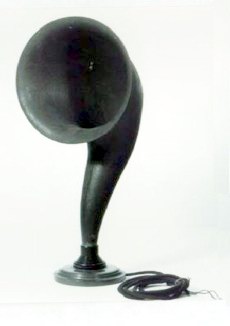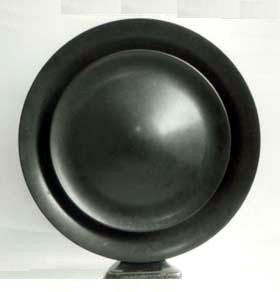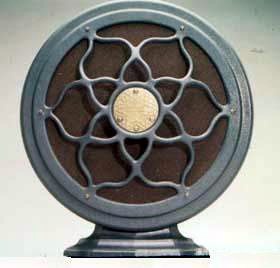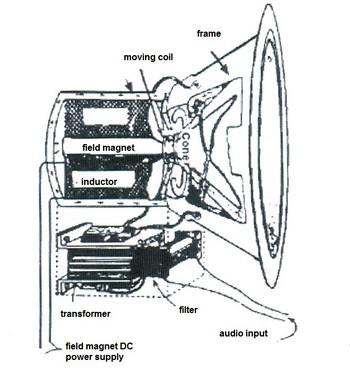In
the early days of radio, in order to listen to the audio frequencies
the sets generally used the well- known earphones originally
derived from the telephone. However, earphones were not a reliable
devices for the proper reproduction of the sound waves and soon
the first loudspeakers appeared on the market.
It is interesting to notice the loudspeaker had hardly changed
since 1925. However, over the years the loudspeaker driving
units may be broadly classified into the following two types:
Moving iron and moving coil.
In the moving iron type, the attraction between the pole pieces
of a permanent magnet and a magnetic diaphragm, rod, or reed
is made to vary in accordance with the variations of the signal
current flowing through coils of wire. Moving iron type driving
units may be further subdivided into iron diaphragm and balanced
armature types. In the moving coil type, the mechanical forces
and motion are developed by the interaction of the varying magnetic
field produced by the flow of the signal current in a conductor,
and that set up by a strong magnet provided which can be either
a permanent magnet or an electro-magnet. |
 |
| Horn speaker circa 1926 |
|
 |
| Schematic of balanced armature loudspeaker |
|
 |
| Primitive type of 2000 Ohm earphone
made in Germany circa 1925. |
|
 |
Bakelite framed loudspeaker using balanced armature driving unit model 2007 made by Philips.
|
|
 |
| Loudspeaker using balanced armature |
|
 |
| Loudspeaker using balanced armature
driving unit made by Sferavox, EUA 1926 |
|
 |
| First type of dynamic loudspeaker
made in the USA by Stewart Warner |
|
 |
| Primitive type of loudspeaker
made in the USA by Crosley |
|

Due to the lack of high flux density magnetic material, in early thirties it is launched in the market the electrodynamic loudspeaker as known as auto-dynamic loudspeaker also. Basically in this type of acoustical transducer the voice coil is energized by an electromagnet powered by direct current supply.
|
|